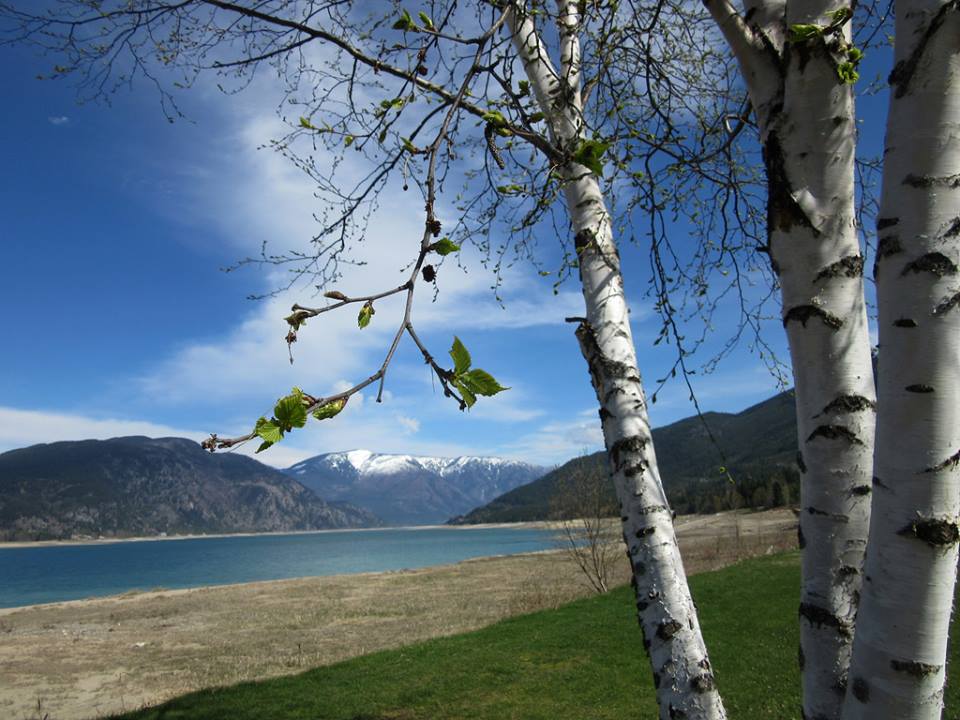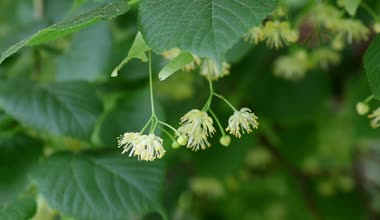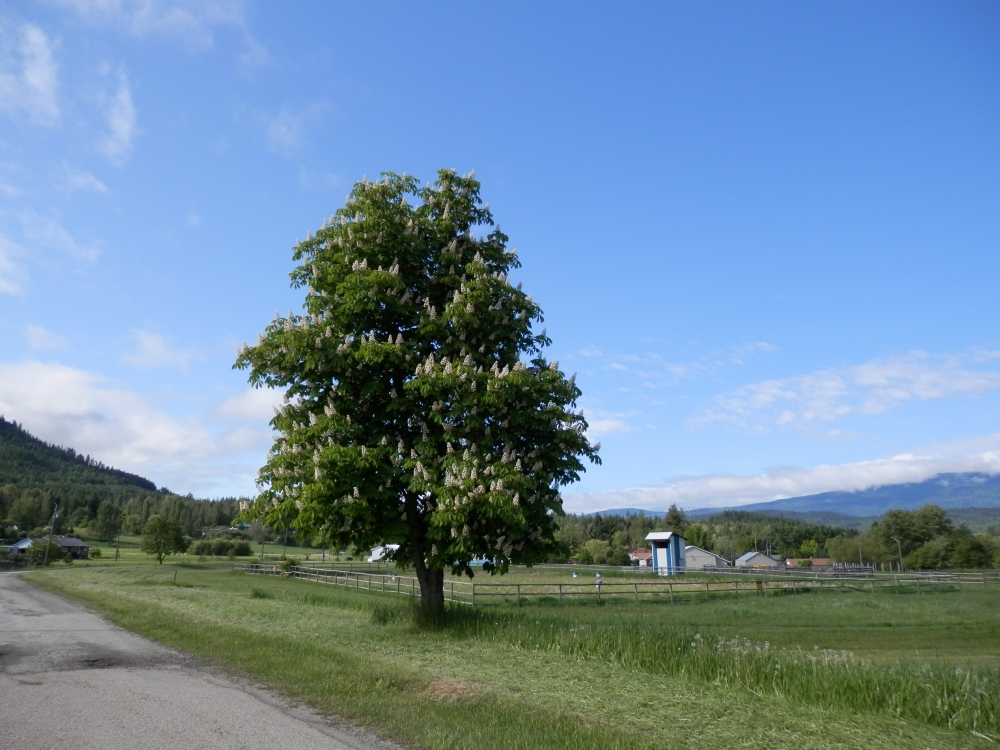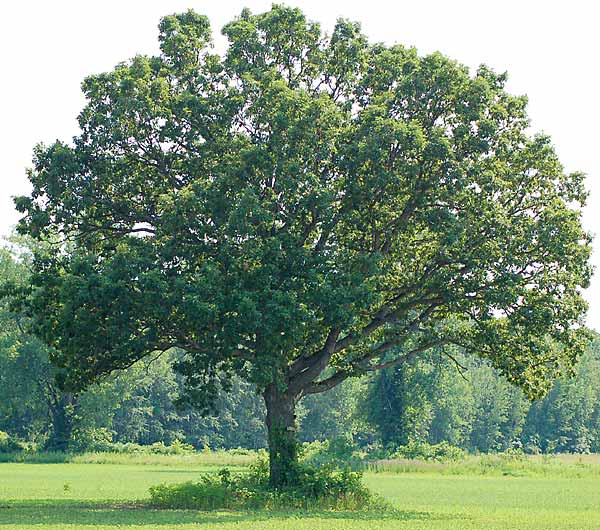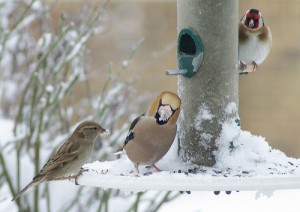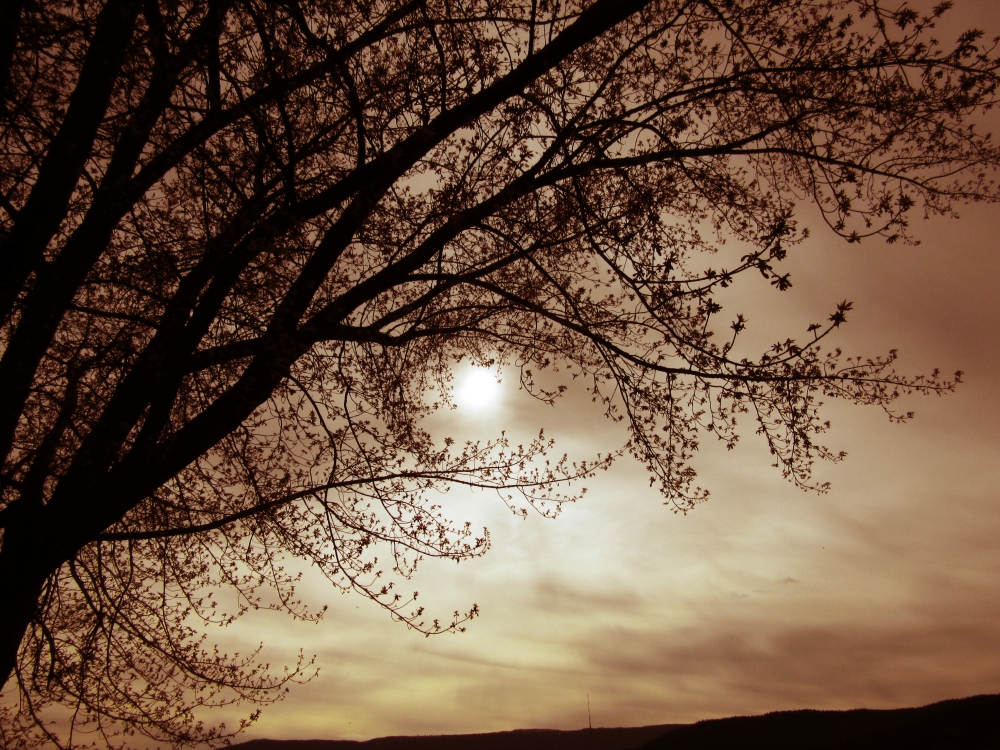In this post I am taking a short break from my chronologically written biography. Right now we are enjoying an exceptionally beautiful spring. All of nature is dressed in their finest. The flowers are blooming in glowing colors and the trees are bursting forth with fresh green leaves in a multitude of shades and hues. Nature is reviving with a vigorous and joyous explosion of life
I want to share a story i wrote a few years ago because right now I am overwhelmed by the beauty of glorious trees coming back to vigorous life after the winter .
From my earliest childhood on, trees were a fundamental part of my life. I took them for granted like the air, the water and the soil. Until I was nine years old, I lived in Thuringia, one of the most densely forested areas of Germany. Trees were all around us. Huge apple and pear trees in our backyard, planted by unknown previous owners, supplied us with abundant crops of delicious fruit every fall. With wonder in my eyes, I would watch golden juice ooze out of the cider press. The spicy aroma of apple sauce simmering in big cauldrons over the fire would permeate the house. Strings of countless apple and pear rings would dry over the stove. Jars of canned fruit would pile up on the counter. How grateful we were to have these faithful trees during the post war times when food was scarce in Germany.
 Our street was flanked by shady linden trees. I can still hear the buzzing of thousands of bees attracted every spring by the clusters of tiny flowers emanating an intoxicating sweet fragrance. My mother would dry the blossoms for a soothing tea.
Our street was flanked by shady linden trees. I can still hear the buzzing of thousands of bees attracted every spring by the clusters of tiny flowers emanating an intoxicating sweet fragrance. My mother would dry the blossoms for a soothing tea.
I hardly remember the building of our school. But, I still see the enormous chestnut trees framing the school yard delighting us every fall with shiny seeds bursting out of prickly round casings. These trees still symbolize home for me, although I was terribly allergic to their pollen.
Our town was surrounded by vast coniferous forests. One of my earliest, vivid memories dates back to the first years after the war when food was in scant supply. I was about three years old. Every weekend my father would hike many miles through dense woods to isolated villages and farms in the hope of trading precious valuables for fresh victuals from the farmers. Taking turns, either my twin brother or I would be sitting snugly in the ruck-sack on his back. On these walks, I would have the shady canopy of trees above me. Occasionally, twigs would scratch my cheeks like scrawny fingers. I would watch curious squirrels scurrying from branch to branch and vivacious little birds pecking at pine cones. I still remember the time, when the haunting eyes of an owl, looking like two luminous will-o’-the-wisps, startled me in the dark forest. Sometimes, on our way home, the first star or the moon would lurk through the swaying treetops. The monotonous motion would lull me to sleep.
 As soon as my twin brother and I could walk and talk, my father would take us, one on each hand, to the near-by castle park. In this beautiful stretch of land grew a rich variety of domestic and foreign trees planted long ago by the lords of the principality. The noble trees, some of them centuries old, yet still growing healthy and strong, had outlived the royal family and the once imposing but now ruined castle. The park, however, legacy of the tree loving princes, was still there for us to enjoy. Although it had grown wild, no longer regularly tended by human hands, it continued to flourish under the care of Mother Nature. Native and foreign trees from faraway countries grew together on the same plot of earth in perfect harmony.
As soon as my twin brother and I could walk and talk, my father would take us, one on each hand, to the near-by castle park. In this beautiful stretch of land grew a rich variety of domestic and foreign trees planted long ago by the lords of the principality. The noble trees, some of them centuries old, yet still growing healthy and strong, had outlived the royal family and the once imposing but now ruined castle. The park, however, legacy of the tree loving princes, was still there for us to enjoy. Although it had grown wild, no longer regularly tended by human hands, it continued to flourish under the care of Mother Nature. Native and foreign trees from faraway countries grew together on the same plot of earth in perfect harmony.
On each walk through this awesome park, my father would teach us the names of the trees, tell us their characteristics and show us ways how to identify them. Before we even went to school, my brother and I could recognize a great number of trees. They became our friends through the seasons.
In the spring we would watch the swelling tree buds miraculously burst forth with sticky leaves or fragrant blossoms. I can never forget the first time I experienced the beauty of a blooming orchard. I felt like a princess in an enchanted fairyland, walking under clouds of delicate flowers that snowed their perfumed petals on my hair.
In the summer we would enjoy the soothing shade when playing, running or dancing under enormous deciduous trees. We observed birds, butterflies, insects and small animals who had their habitat in this enchanting realm.
Fall was our favorite time of year, because we could collect delicious beech nuts, hazelnuts, shiny chestnuts, acorns, pine cones and colorful leaves. We had great fun and excitement hoarding these treasures in big baskets. They would often amuse us more than expensive toys.
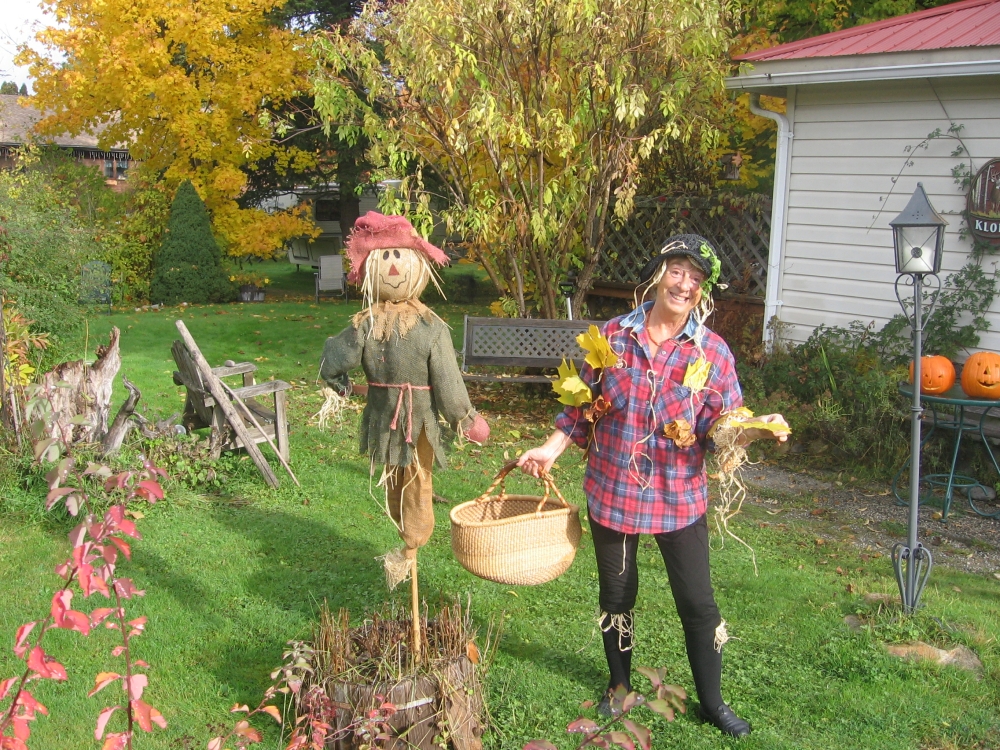 Even winter was exciting, when snow adorned the bare branches of deciduous trees and dusted the evergreens. We were delighted by the cascades of soft snow coming down at unpredictable intervals. The cheerful little birds fluttering and skittering in the feeders provided us lots of entertainment.
Even winter was exciting, when snow adorned the bare branches of deciduous trees and dusted the evergreens. We were delighted by the cascades of soft snow coming down at unpredictable intervals. The cheerful little birds fluttering and skittering in the feeders provided us lots of entertainment.
As we grew older, our parents took us on long hikes through the forests. We would collect berries and mushrooms, pick flowers and observe wild life. The wind whispering in the trees, the bubbling creeks, the rushing waterfalls would soothe us with their rhythmic sounds. The birds’ singing, the small animals rustling under the leaves, the hammering of the woodpecker, the hootings of the owl, the chatterings of squirrels, the cry of the buzzard all contributed to the joyous song of Nature. In my mind the smell of the moist earth, the sun warmed pine needles, the perfumed flowers and the aroma of berries and tree sap lingers on forever.
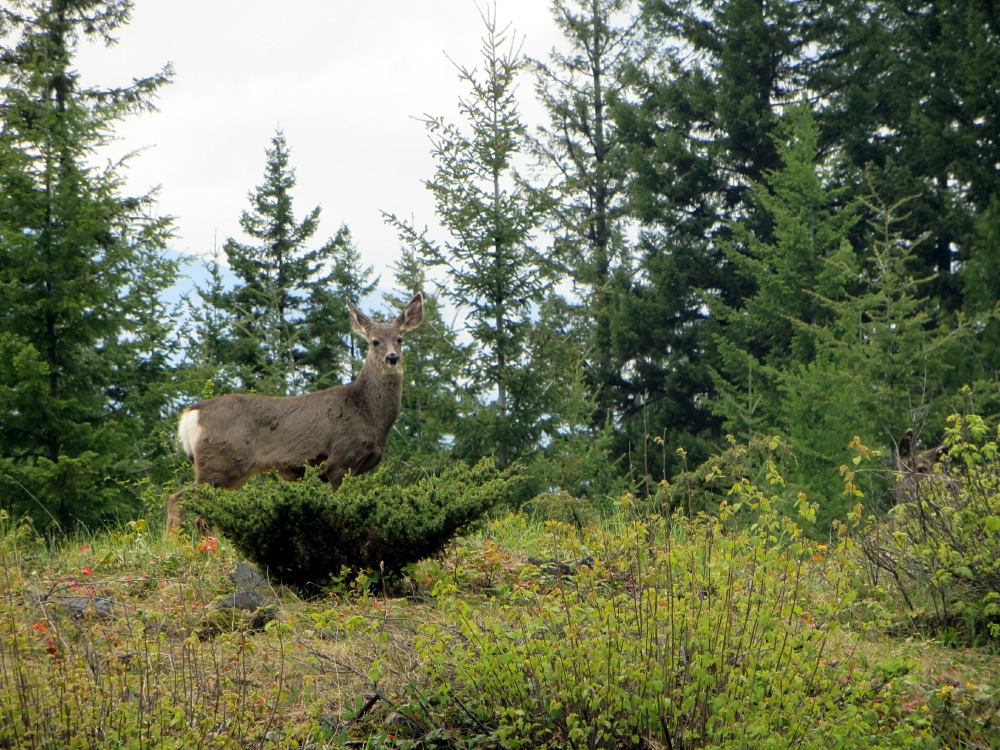 We enjoyed freedom, solitude and excitement. On these hikes. my father would tell us fascinating stories, legends and fairy tales of trees, inciting our imagination, instilling awe. He told us that all over the world, from the beginning of time, people worshiped trees and regarded them as sacred abodes of divine spirits, or souls. Remarkable oak or beech trees were revered by our forefathers in Germany until the Middle Ages. Many villages had holy groves where tree deities or powerful spirits with oracular powers resided. The erection and celebration of the ‘May Tree’ is one of the ancient ceremonies which has survived to the present day. It was regarded a sin or crime to willfully injure or damage a tree. People who had to fell trees out of necessity asked them for forgiveness.
We enjoyed freedom, solitude and excitement. On these hikes. my father would tell us fascinating stories, legends and fairy tales of trees, inciting our imagination, instilling awe. He told us that all over the world, from the beginning of time, people worshiped trees and regarded them as sacred abodes of divine spirits, or souls. Remarkable oak or beech trees were revered by our forefathers in Germany until the Middle Ages. Many villages had holy groves where tree deities or powerful spirits with oracular powers resided. The erection and celebration of the ‘May Tree’ is one of the ancient ceremonies which has survived to the present day. It was regarded a sin or crime to willfully injure or damage a tree. People who had to fell trees out of necessity asked them for forgiveness.
I still remember shivers creeping down my spine when my father told us how severely people were punished if they only peeled bark from a living tree. “The culprit’s navel was to be cut out and nailed to the part of the tree which he had peeled, and he was to be driven round and round the tree till his guts were wound about its trunk.” Thus, he was to replace the dead bark with his own intestines. The life of a tree was as sacred as a human life. He also told us the Biblical story of the Tree of the Knowledge of Good and Evil and the Tree of Life. Thus, even at a very young age, I intuitively understood that our physical and spiritual life depended on trees.
Life without trees was unimaginable to me. But I came close to such a condition when living on the prairie as a young wife. My husband had found his first teaching job in a small town in Alberta, near the Saskatchewan border. At first I felt as though I had been transplanted to a different planet, a world without trees. However, to our great relief and joy, we discovered a small grove of hardy alder, birch and aspen trees near the saline Gooseberry Lake, 20 miles out of town. We would flock to this oasis whenever we could. All the important social events of the community took place in this precious tree sanctuary. Even in the midst of winter, we would have picnics there. People would take any opportunity to visit these trees.
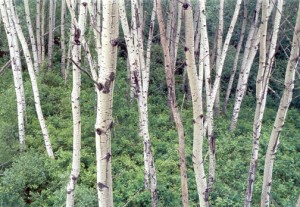 Every little stick of a tree was cherished on the prairie We planted a few in our backyard and tended them with almost as much loving care as our children.
Every little stick of a tree was cherished on the prairie We planted a few in our backyard and tended them with almost as much loving care as our children.
However, we increasingly missed the lush trees and forests, we grew up with in Germany. Finally, after eight years living on the tree-barren prairie, we found a new home in an isolated logging community in the interior of B.C. Once again we are surrounded by an abundance of different kinds of trees and vast stretches of impenetrable, primordial forests.
In our own backyard alone, we now have cedar, pine, fir and spruce trees, fruit trees, nut trees, willow trees and ornamental trees, all growing on the same plot of land. We are grateful to the unknown people who planted many of the trees on our property long before us. A huge mountain ash proudly graces our front yard, feeding innumerable migrating birds in the fall with its intoxicating red berries. When we first moved here our boys used to jump over it. Now it stretches up to the sky. It is a reminder of the passing of time.
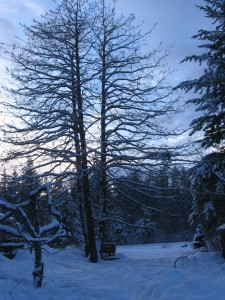 Most of our neighbors and friends make their living from logging. Even our sons worked on and off in the bush to earn money for their college education. In spite of my love for trees, I accepted logging as part of life. “We harvest from nature in order to survive. We depend on wood since the beginning of time. There are enough trees to sustain us all. As long as trees are logged in remote areas, we are not directly affected by their loss. Nature will replenish the forests in due time.” With these kind of thoughts, I tried to reconcile my conflicting feelings towards logging.
Most of our neighbors and friends make their living from logging. Even our sons worked on and off in the bush to earn money for their college education. In spite of my love for trees, I accepted logging as part of life. “We harvest from nature in order to survive. We depend on wood since the beginning of time. There are enough trees to sustain us all. As long as trees are logged in remote areas, we are not directly affected by their loss. Nature will replenish the forests in due time.” With these kind of thoughts, I tried to reconcile my conflicting feelings towards logging.
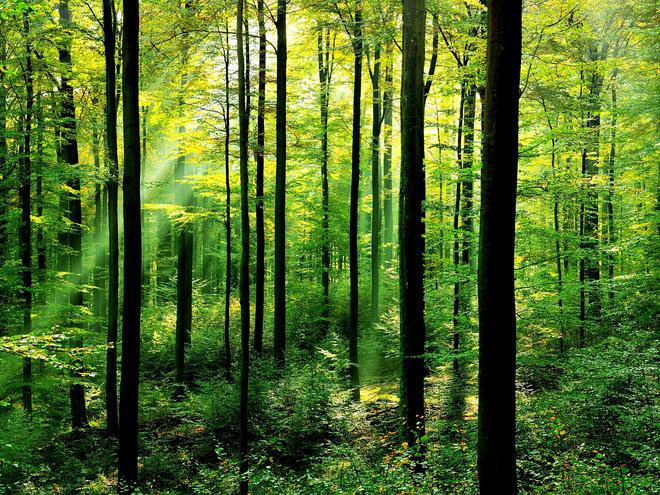 One day, however, I personally felt the impact of logging in a more personal way. My husband, Peter, and I had discovered on the other side of the lake, an area of old growth forest which could only be accessed by boat. It became our favorite mushroom spot, because it grew an abundance of tasty chanterelles and precious pine mushrooms. For many years, in the late summer and fall, we would paddle in our canoe across the lake, often in the misty morning light, to enjoy the heavenly solitude of this wonderful forest. We would pick mushrooms growing in the dark soil or mossy patches under the graceful hemlock trees. For us, it was a piece of paradise which would restore us physically and spiritually from the daily routines and stresses of life. Every year we looked forward to these outings with joyous anticipation.
One day, however, I personally felt the impact of logging in a more personal way. My husband, Peter, and I had discovered on the other side of the lake, an area of old growth forest which could only be accessed by boat. It became our favorite mushroom spot, because it grew an abundance of tasty chanterelles and precious pine mushrooms. For many years, in the late summer and fall, we would paddle in our canoe across the lake, often in the misty morning light, to enjoy the heavenly solitude of this wonderful forest. We would pick mushrooms growing in the dark soil or mossy patches under the graceful hemlock trees. For us, it was a piece of paradise which would restore us physically and spiritually from the daily routines and stresses of life. Every year we looked forward to these outings with joyous anticipation.
Three years ago, after the first rains in early fall, we paddled across the lake to our beloved sanctuary. We landed the canoe on the sandy beach, ran up the banks with happy excitement, labored our way through the stretch of dense brush covering the entrance of the forest and …..we could not believe our eyes! Devastation! Nothing but devastation! As far as we could see, not one tree in sight! Only dusty, stirred up soil. Gigantic heaps of discolored, dry branches and bark looked like heaps of bones on a battle field. A deadly silence. Hardly any motion, only little swirls of dust, stirred up by a passing breeze like smoke. Dumbfounded, unable to speak, Peter and I stood there for a long time….This magnificent, ancient forest, habitat of such rich vegetation and wild life, gone in a twinkling of an eye!
Forests are destroyed, but they are also replanted. We have a friend who is a tree planter. When our youngest son was born I asked him to plant a tree for him. “I’ll plant him a forest,” he replied.
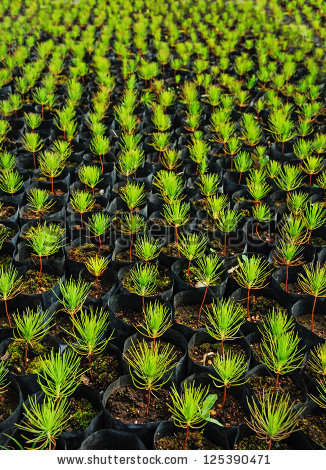 All my life I have enjoyed trees and forests which people have planted or preserved for us in the past. Now, Peter and I have started to plant at least one or two trees every year. It is our small contribution to ensure that trees will be remembered for generations to come.
All my life I have enjoyed trees and forests which people have planted or preserved for us in the past. Now, Peter and I have started to plant at least one or two trees every year. It is our small contribution to ensure that trees will be remembered for generations to come.

